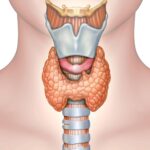- Home
- GYNECOLOGY/OBSTETRICS
- Urinary Tract Infection (UTI)

A urinary tract infection (UTI) is an infection affecting any part of the urinary system, including the urethra (urethritis), bladder (cystitis), ureters, or kidneys (pyelonephritis). UTIs are commonly encountered in clinical practice, particularly among women, and can range from simple bladder infections to more serious kidney infections.
Pathophysiology
Bacterial Entry: Most UTIs arise from ascending bacterial infections, where bacteria enter the urinary tract through the urethra. The majority are caused by Escherichia coli (E. coli), which normally reside in the gastrointestinal tract and can colonize the periurethral area
Ascending Infection: After colonizing the urethra, bacteria can ascend into the bladder, leading to cystitis. If the infection is not managed promptly, bacteria may ascend further through the ureters, reaching the renal pelvis and kidneys, causing pyelonephritis.
Host Defense Mechanisms: The urinary tract has several protective factors, including continuous urine flow, acidic pH, and the presence of immune defenses like IgA antibodies in the mucosal lining. Any disruption to these mechanisms can predispose an individual to UTIs.
Etiology
Causative Organisms
- E. coli (80-90% of uncomplicated UTIs): The predominant pathogen in community-acquired infections.
- Other Gram-negative Organisms: Such as Klebsiella, Proteus, and Enterobacter.
- Gram-positive Bacteria: Such as Staphylococcus saprophyticus (commonly affects young sexually active women), and Enterococcus species.
- Hospital-Acquired UTIs: Can be caused by more resistant organisms, including Pseudomonas aeruginosa and multidrug-resistant Enterobacteriaceae.
Risk Factors
- Female Sex: Women have a higher risk due to a shorter urethra and proximity to the anus.
- Sexual Activity: Increases the risk by introducing bacteria into the urethra.
- Urinary Catheters: Instrumentation of the urinary tract provides a route for bacteria.
- Obstructive Uropathy: Conditions like kidney stones, benign prostatic hyperplasia (BPH), or ureteral strictures obstruct urinary flow.
- Pregnancy: Can lead to urinary stasis due to mechanical compression and hormonal changes.
- Diabetes Mellitus: High glucose levels in the urine can promote bacterial growth.
Clinical Features
Lower UTI (Cystitis):
- Dysuria: Painful or burning sensation during urination.
- Frequency and Urgency: Frequent need to urinate with a strong, sudden urge.
- Suprapubic Pain or Discomfort: Lower abdominal pain or pressure.
- Hematuria: Presence of blood in the urine, either microscopic or gross.
Upper UTI (Pyelonephritis):
- Flank Pain or Costovertebral Angle Tenderness: Suggests kidney involvement.
- Fever and Chills: Indicate systemic infection.
- Nausea and Vomiting: Commonly accompany upper tract involvement.
- Systemic Symptoms: May include malaise, fatigue, or sepsis in severe cases.
Diagnosis
- Urinalysis: Key diagnostic tool, showing:
- Leukocyte Esterase: Indicates the presence of white blood cells (pyuria).
- Nitrites: Produced by certain bacteria like E. coli, suggesting a gram-negative infection.
- Pyuria: Presence of white blood cells (>10 WBCs/HPF) in the urine is indicative of infection.
- Hematuria: Microscopic or macroscopic blood in the urine.
- Urine Culture: Confirms the diagnosis, identifies the causative organism, and tests antibiotic susceptibility. Significant bacteriuria is defined as ≥10^5 colony-forming units (CFU)/mL in a midstream clean-catch specimen.
- Imaging (Ultrasound or CT): Recommended for complicated UTIs, recurrent infections, or suspected urinary tract abnormalities. It helps rule out abscesses, stones, or anatomical abnormalities.
Management
Uncomplicated UTI (Cystitis):
- Empiric Antibiotic Therapy: Usually involves a 3-5 day course of antibiotics such as:
- Nitrofurantoin: 100 mg twice daily for 5 days.
- Trimethoprim-sulfamethoxazole (TMP-SMX): 160/800 mg twice daily for 3 days.
- Fosfomycin: 3 g single dose.
- Symptomatic Treatment: Analgesics like phenazopyridine may relieve dysuria.
Complicated UTI or Pyelonephritis
- Initial Broad-Spectrum Antibiotics: Include oral or IV fluoroquinolones (e.g., ciprofloxacin, levofloxacin) or cephalosporins (e.g., ceftriaxone).
- Duration of Therapy: Typically 7-14 days, depending on clinical response and severity.
- Hospitalization: May be necessary for severe cases, especially with systemic symptoms like sepsis or if there is an inability to tolerate oral medications.
Complications
- Recurrent UTIs: Defined as ≥3 episodes per year or ≥2 in six months. Often related to persistent risk factors.
- Chronic Pyelonephritis: May lead to renal scarring or chronic kidney disease, particularly in young children or those with vesicoureteral reflux.
- Sepsis: Particularly in elderly, diabetic, or immunocompromised patients, UTIs can progress to urosepsis, a life-threatening condition.
- Renal Abscess Formation: Requires drainage and extended antibiotic therapy if not responsive to standard treatment.
Prevention
- Hydration: Adequate fluid intake increases urine output, helping flush bacteria from the urinary tract.
- Personal Hygiene Practices: Especially in women, wiping from front to back reduces the risk of bacterial migration from the rectum to the urethra.
- Prophylactic Antibiotics: May be considered for individuals with recurrent UTIs.
- Post-Coital Prophylaxis: In sexually active women prone to UTIs, taking a single dose of antibiotics after intercourse can reduce risk.
- Avoidance of Spermicides: These disrupt the natural vaginal flora, increasing UTI risk.
Prognosis
- Uncomplicated UTIs: With appropriate antibiotic therapy, most cases resolve without complications.
- Complicated UTIs or Pyelonephritis: Can have more serious outcomes if not managed promptly, with a higher risk of complications like renal abscess, sepsis, or permanent kidney damage.
In summary, UTIs are common infections that can be effectively treated with timely and appropriate antibiotic therapy. Early diagnosis and management are crucial to prevent complications, especially in high-risk populations such as pregnant women, diabetics, and those with underlying urinary tract abnormalities.












